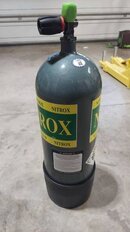vinsanity
Contributor
I'm looking for a Faber HP100 to double up with one I have.
If you are in the Portland/Seattle area, I have an extra Faber HP117 in great condition with a fresh hydro, o2 clean, and Vis that I'll trade you. Otherwise, I have cash. Outside the area, I'm open to shipping on my dime if you are willing to box it up.
For the right price, I might also be interested in buying an already doubled set of HP100s that are not the old 3500 psi skinny neck.
Pic of my HP117.
If you are in the Portland/Seattle area, I have an extra Faber HP117 in great condition with a fresh hydro, o2 clean, and Vis that I'll trade you. Otherwise, I have cash. Outside the area, I'm open to shipping on my dime if you are willing to box it up.
For the right price, I might also be interested in buying an already doubled set of HP100s that are not the old 3500 psi skinny neck.
Pic of my HP117.




